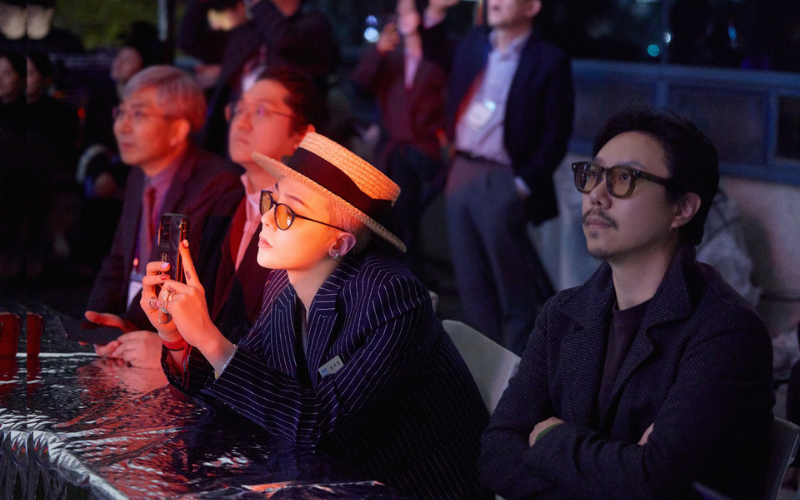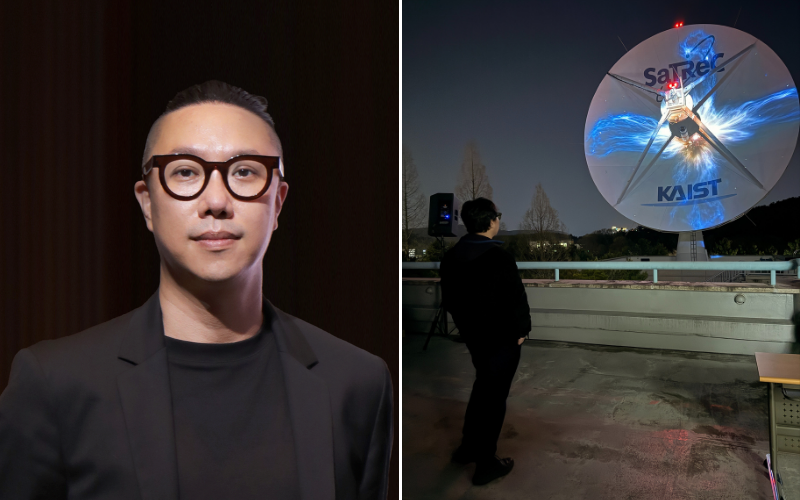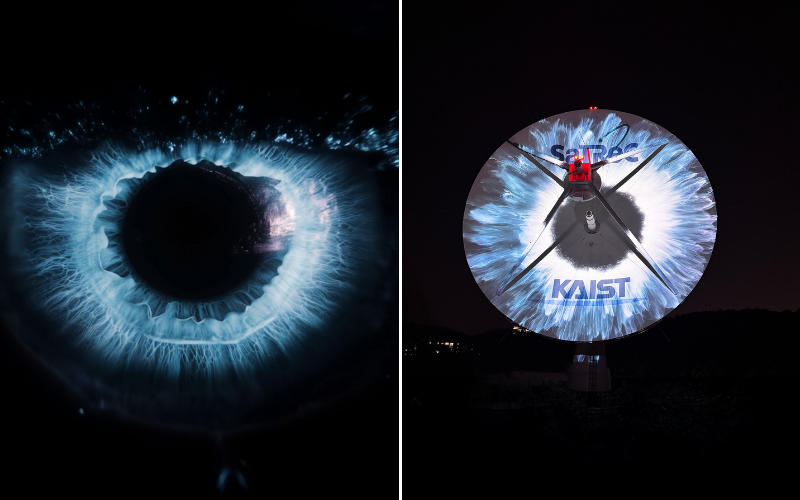- 한국어
- English
- 日本語
- 中文
- العربية
- Español
- Français
- Deutsch
- Pусский
- Tiếng Việt
- Indonesian
By Honorary Reporter Volga Serin Suleymanoglu from Turkiye (Turkey)
Photos = KAIST Art and Technology Center
The Korea Advanced Institute of Science and Technology (KAIST) on April 9 made history by transmitting K-pop artist G-Dragon's song "Home Sweet Home" into space, the world's first transmission of media art into space.
Combining cutting-edge technology with art, the project, dubbed "Good Morning, Mr. G-Dragon," is the brainchild of Lee Jin-joon, a professor at KAIST's Graduate School of Culture Technology. A native of Masan (now part of Changwon), Gyeongsangnam-do Province, he has spent two decades as a media artist and critical designer.
As director of both the Art and Technology Center (KATEC) and the Total Experience Creative Media Lab (TX Lab) at KAIST, the professor discusses his project in this interview conducted from April 10 to May 7.

K-pop artist G-Dragon (left) and KAIST professor Lee Jin-joon (right) on April 9 watch the transmission of G-Dragon's song "Home Sweet Home" into space.
Briefly describe your background and artistic vision.
After studying fine arts at Seoul National University, I earned my master's at the Royal College of Art in London, winning the top prize at the Fine Art Degree Show. My Oxford doctorate project "Empty Garden" merged East Asian philosophy with studies of memory and identity.
My installations combine immersive environments, data visualization and sound architecture. I've exhibited at home and abroad including at Korea's National Museum of Modern and Contemporary Art, Germany's ZKM and the Rotterdam (Netherlands) International Film Festival. I'm a fellow of the Royal Society of Arts and serve on the advisory committee for the World Summit on Arts and Culture, which Korea hosts from May 27-30.
Through AI and multisensory spaces, I create environments where audiences can explore the boundaries of perception and new technological futures.
What are the two platforms you lead at KAIST?
KATEC is an international platform rethinking the cultural dimensions of emerging technologies, spanning post-humanism, creative artificial intelligence, cybernetics and speculative design.
The TX Lab translates these concepts into practice-based research, bringing together technical creators, creative technicians and critical interpreters from diverse backgrounds. Our approach is shaped by key thinkers who are not just references but vital collaborators in our evolving ecosystem.

On the left is a portrait of KAIST professor Lee Jin-joon and on the right is an image on April 9 showing him monitoring a KAIST satellite.
What inspired the "Good Morning, Mr. G-Dragon" project?
Inspired by our era's social fragmentation and Carl Sagan's "Pale Blue Dot," the project aims to send something more emotional than informational into space. It transforms G-Dragon's iris into a luminous mindscape and beams his voice into orbit, echoing (installation artist) Paik Nam-june's work while creating a new form of cosmic connection.
The project exemplifies how art and science can meet as equals, raising existential questions about our relationship with technology and space. It's not about creating a new gallery venue but about exploring how human emotion might resonate across cosmic distances.

The media artwork "Good Morning, Mr. G-Dragon" on April 9 is projected on to an antenna used by KAIST's small satellite to transmit G-Dragon's biosignals like his iris data and voice.
What advice do you have for artists and scientists?
To those exploring the intersection of art and technology, don't wait for permission or limit yourself to code alone. Learn to speak the language of silence, rhythm and memory. Remember that every signal needs an imagined receiver, even light-years away.
In our digital age, where negativity can spread instantly, we must transform challenges into creative energy. Through empathy and sincerity, we can turn darkness into light, using even our wounds to create work that resonates with deeper human connection.
msjeon22@korea.kr
*This article is written by a Korea.net Honorary Reporter. Our group of Honorary Reporters are from all around the world, and they share with Korea.net their love and passion for all things Korean.